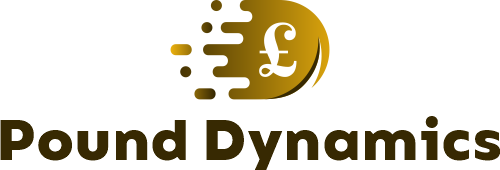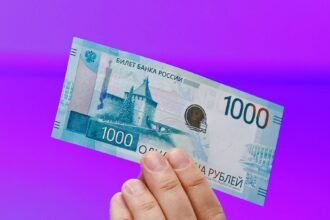- Comparing multi-currency accounts in Singapore (2025)
- Citibank Global Foreign Currency Account
- DBS Multi-Currency Account
- HSBC Everyday Global Account
- UOB FX+ Debit Card
- Instarem’s Amaze Card
- Revolut card
- Wise
- YouTrip card
- Airwallex Business Account
- Note: Paying by credit card is not always an option in certain countries
Remember the days of queuing at money changers in Mustafa or Change Alley, hoping for the best exchange rate-then clutching your cash all the way home like a nervous millionaire? Those days are long gone.
With today’s multi-currency accounts and cards, you can exchange, spend, and even withdraw foreign currencies right from your phone-no cash, no stress, and no nasty FX surprises.
In this guide, we’ll first look at bank-backed multi-currency accounts, like the feature-packed UOB FX+ Debit Card or good old DBS Multiplier Account — yes, it’s also a multi-currency account. Then, we’ll explore next generation of fintech multi-currency cards such as Airwallex and Revolut that are redefining how we spend overseas.
So, are these digital travel wallets as convenient (and fee-free) as they claim to be? Let’s find out.
Comparing multi-currency accounts in Singapore (2025)
| Card/wallet | Foreign currencies (excluding SGD) | Card/account fees | Overseas ATM withdrawal fee |
| Citibank Global Foreign Currency Account | 14 currencies: AUD, CAD, EUR, HKD, JPY, NZD, GBP, CHF, USD, AED, ZAR, SEK, NOK, DKK | $15 a month if your Total Relationship Balance (TRB) across all your Citi accounts and investments is less than S$15,000 at the end of each month | 2.5% fee if your withdrawal or transaction is in a currency different from your account’s |
| DBS Multiplier | 12 currencies: AUD, CAD, CNH, EUR, HKD, JPY, NZD, NOK, GBP, SEK, THB, USD | Fall below fee of $5 a month if your balance dips under S$3,000. | $7 (free for withdrawals with Plus/Cirrus Card via Westpac Group ATMs in Australia and DBS Hong Kong, and Plus Card via DBS ATMs in India and Indonesia |
| HSBC Everyday Global Account | 10 currencies: AUD, CAD, EUR, JPY, NZD, GBP, CHF, USD, HKD, RMB | Fall below fee of $5 a month if your balance dips under S$2,000. | Free at HSBC ATMs worldwide except in Argentina, France, Brazil, Greece, Malta, Mexico, New Zealand and Turkey—these will incur a 1.5% debit card foreign transaction fee. |
| UOB FX+ Debit Card | 10 currencies: AUD, CAD, CHF, CNH, EUR, GBP, HKD, JPY, NZD, USD, SGD | $18.34 yearly (First 3 years card fee waiver); annual fee wavier with 12 Mastercard transactions per year | $5 per withdrawal at non-UOB ATMs |
| Instarem’s Amaze Card | Exchange and store 11 currencies: SGD, EUR, USD, JPY, THB, GBP, AUD, CHF, NZD, CAD and MYR. | No account fees | 2% |
| Revolut | Pay with over 150+ currencies. Exchange and store 30+ foreign currencies in-app | 3 membership tiers: Standard (free), Premium ($9.99/month), and Metal ($19.99/month). | 2% or $1.49 (whichever is higher) after the first $350/month or the first 5 withdrawals per month, whichever comes first, |
| Wise | Exchange and store 40+ foreign currencies | No account fees. One-off $8.50 fee to order your physical card (digital card is free). | 1.75% on any amount withdrawn above $350/month plus $1.50 per withdrawal if you make 3 or more withdrawals. |
| YouTrip | Over 150 currencies worldwide. You can exchange and store 10 currencies on the go in your YouTrip app: SGD, USD, EUR, GBP, JPY, HKD, AUD, NZD, CHF, SEK | No account fees | 2% after first S$400 in a month |
| Airwallex Business Account | Collect payments via bank transfer in 20+ currencies | No account fees | ATM withdrawals not supported |
Citibank Global Foreign Currency Account
To transfer money and pay in a foreign currency, you will have to have a local and foreign currency account with Citibank. First you transfer money from your SGD account to the foreign currency one, such as their Global Foreign Currency Account, converting the currency in the process. You then link the currency of your choice to your Citibank Debit Mastercard.
The Citibank Debit Mastercard lets you transact overseas and withdraw cash at any Citibank ATM overseas without having to pay ATM fees or additional conversion fees. You’ll also enjoy better exchange rates than if you were to use a regular ATM card.
The main benefit of this card compared with most of the multi-currency accounts on this list is that you can withdraw cash for free if you do not want to or are unable to pay by card, provided you can find a Citibank ATM. However, if you withdraw cash or make a transaction in a foreign currency that differs from your Global Foreign Currency Account’s, you’ll have to pay a 2.5 per cent administrative fee.
You’ll have to pay a fall-below fee of $15 a month if your Total Relationship Balance (TRB) across all your Citi accounts and investments is less than $15,000 at the end of the month.
Another thing to consider is that you cannot link this card with another credit or debit card. So, you need to make sure there’s enough money in your multi-currency wallet, otherwise your payment will be declined. On the bright side, that means there’s no way you’ll incur late fees.
Pros of the Citibank Global Foreign Currency Account
- Exchange and store 14 foreign currencies
- Account and card are free with no fees and charges
- No fees at Citibank ATMs
Cons of the Citibank Global Foreign Currency Account
- 2.5 per cent fee for withdrawals/transactions in a currency different from your account’s
- $15 fall-below fee applies if your TRB dips below $15,000
DBS Multi-Currency Account
The DBS Multi-Currency Account (MCA) lets you stash cash in up to 12 foreign currencies as well as the Singapore dollar.
There are a few types of DBS MCA, but the most popular one is the DBS Multiplier Account as it allows you to save SGD for your personal savings and gives you bonus interest for crediting salary and spending with a DBS credit card. Read more about it in our review of the best savings accounts in Singapore.
The basic account is free and there is no initial deposit, however, fall below fees ($5 a month) apply if your balance dips under $3,000. This fee will be waived if you’re 29 years old or below.
If you have the Multiplier already, you can easily use the “Transfer Funds to My Account” function to convert currencies. For other types of MCA, you transfer money in SGD to the account, exchange currencies and then leave the money in the account for future use.
They don’t charge forex conversion fees, which means their exchange rates are quite competitive compared to what money changers can offer. That said, the best money changers such as Mustafa are usually able to offer slightly better rates. However, their rates can still be higher than multi-currency card services like YouTrip, Wise and Revolut.
You can link the account directly to a DBS Visa Debit Card, which means that when you’re overseas you can use the card to pay. This lets you skip a trip to the money changer-instead, you can exchange currencies when the exchange rate is favourable and then spend the cash on the card.
With the DBS Visa Debit Card linked to a DBS MCA (as opposed to a regular DBS account), you won’t be charged any foreign exchange and debit card fees.
The DBS Visa Debit Card can also be used to withdraw cash at ATM machines. However, the catch is that there is a service charge of S$7 per cash withdrawal. The card is only free to use overseas at certain ATMs:
- Plus/Cirrus Card via Westpac Group ATMs in Australia and DBS Hong Kong
- Plus Card via DBS ATMs in Hong Kong, India, and Indonesia
How to apply for DBS MCA?
You can apply for the Multi-Currency Account by downloading the DBS digibank app and registering for an account with your Singpass.
Pros of DBS MCA
- 12 foreign currencies
- No foreign exchange fees or debit card fees
- ATM cards can be used overseas
- Free ATM withdrawal with Plus/Cirrus Card via Westpac Group ATMs in Australia and DBS Hong Kong, and Plus Card via DBS ATMs in India and Indonesia
- No account fees
Cons of DBS MCA
HSBC Everyday Global Account
The HSBC Everyday Global Account works like a regular multi-currency savings account, letting you stash your personal savings in SGD and then convert them to other currencies.
To exchange currencies, you can download the HSBC Mobile app where their integrated foreign exchange service lets you get real-time currency exchange rates and make currency exchanges when the rates are in your favour.
With the HSBC Everyday Global Account, you will be issued the HSBC Everyday Global Debit Card, which you can use to pay overseas in 10 currencies and withdraw cash at HSBC ATMs worldwide for free except in these countries: Argentina, France, Brazil, Greece, Malta, Mexico, New Zealand and Turkey. You’ll have to pay a 1.5 per cent debit card foreign transaction fee for foreign ATM withdrawals.
On the bright side for high rollers, you can withdraw up to 10,000 SGD from ATM machines worldwide, provided you dare to walk around with that much cash on you.
You also have the opportunity to earn one per cent cashback on eligible spending and one per cent bonus interest on incremental daily balances if you qualify for the HSBC Everyday+ Rewards Programme.
That requires you to jump through a few hoops-namely, deposit at least $2,000 each month and perform five eligible transactions per month, such as using your Everyday Global Debit Card, making GIRO bill payments and so on. Read more about it in our review of the best savings accounts in Singapore.
While there are no account fees, you’ll be charged a fall-below fee of $5 if the average daily balance in your HSBC Everyday Global Account falls below $2,000.
How to apply for the HSBC Everyday Global Account
If you’re an existing HSBC banking customer with another HSBC bank account, you can apply via online banking.
If you only have an HSBC credit card or insurance products, fill out this form so that HSBC can get in touch with you.
Pros of the HSBC Everyday Global Account
- Exchange and store 10 foreign currencies
- Account and card are free with no fees and charges
- No fees at HSBC ATMs in most countries
- High ATM withdrawal limit of $10,000
- Possibility to earn bonus interest with the HSBC Everyday+ Rewards Programme
Cons of the HSBC Everyday Global Account
- 1.5 per cent fee for non-HSBC ATM withdrawals and withdrawals in Argentina, France, Brazil, Greece, Malta, Mexico, New Zealand and Turkey
- RMB is not supported
UOB FX+ Debit Card

UOB’s FX+ Debit Card is built for travellers who want the ease of tap-and-go spending without getting stung by hidden fees. It works with any of the following UOB accounts:
- One Account
- Wealth Premium Account
- Privilege Account
- iAccount
You get 0 per cent FX fees worldwide on card purchases-no caps, no minimum spend, no pre-trip top-ups. Pair it with the UOB TMRW app to convert in advance at competitive rates, or set rate alerts/auto-convert to lock in your preferred rate before you fly.
Day-to-day, the card works like any regular debit card, but it also functions as a multi-currency wallet (11 currencies) so you can spend from your stored balances overseas.
Sweeteners include free travel insurance and cashback on overseas ATM withdrawals, plus a neat perk for UOB savers: spending on FX+ counts towards the S$500 minimum spend to unlock bonus interest on your UOB One Account.
If you’re already in the UOB ecosystem and want a fee-light travel card with simple controls in one app, FX+ is an easy pick. Frequent Malaysia-goers also get a limited-time boost: three per cent cashback on MYR mobile contactless (capped at S$20; promo till Jan 31, 2026).
How to apply for UOB FX+ Debit Card
You can apply for the UOB FX+ Debit Card online easily via Singpass or UOB Personal Internet Banking.
Pros of the UOB FX+ Debit Card
- 0 per cent FX fees worldwide on card spends, no caps/minimums.
- 11 currencies; convert ahead at app rates and set rate alerts.
- Free travel insurance; S$5 cashback on the first four overseas ATM withdrawals.
- Counts toward S$500 monthly spend for UOB One Account bonus interest.
- Free UOB ATM withdrawals across Asean; no account opening or card issuance fees.
Cons of the UOB FX+ Debit Card
- ATM fee of S$5 (or foreign-currency equivalent) may apply when withdrawing stored currencies outside the free-withdrawal scenarios.
- Currency list is limited (11) vs cards like Wise/Revolut.
- Three per cent MYR cashback is promo-only, capped at S$20, and ends Jan 31, 2026.
- Requires managing conversions in the UOB TMRW app to maximise savings.
Instarem’s Amaze Card
Instarem started out as a company that only offered online remittance but then followed in Revolut and Wise’s footsteps by offering the Amaze card.
You can link up to five Mastercard debit or credit cards with your Amaze card. When you pay overseas using it, Amaze will automatically convert and then charge it to your linked credit or debit card. This means no foreign transaction fees and better rates.
You also have the option of topping up the card with SGD and then exchanging and storing currencies until you wish to spend them. You can store up to 11 different types of currencies in the multi-currency wallet: SGD, EUR, USD, JPY, THB, GBP, AUD, CHF, NZD, CAD and MYR. The maximum amount you can top up is S$3,000. Topping up your amaze wallet with PayNow is free.
However, if you link your card, you’ll get charged for the following:
- Domestic (SGD) transactions: One per cent fee (minimum S$0.50)
- FX transactions: Up to 2.1 per cent FX spread
I don’t advise you go the route of linking your card. Not only do you incur fees, but you also won’t be awarded InstaPoints for your linked card spends.
Instarem Amaze Card – earning InstaPoints
You get to earn InstaPoints on the Amaze card at a rate of 0.5 InstaPoints per 1 S$1 spent in foreign currency, with no monthly cap.
Redeem your InstaPoints as KrisFlyer miles at a rate of 1,200 InstaPoints = 400 KrisFlyer miles. So if we do the math…
S$2,400 spending in foreign currency → 1,200 InstaPoints → 400 KrisFlyer miles
That works out to be a 0.17 miles per dollar rate-paltry compared to a miles card, but I suppose better than the nothing you get to earn from its competitors Revolut and Wise.
Also compared to its competitors, the Amaze card offers a much higher withdrawal limit of S$1,000 per day. So, if you travel to places that don’t accept payment by card, this can be useful.
The catch? Instarem charges a fee worth two per cent of the amount withdrawn, on top of any fees charged by the foreign bank.

Pros of Instarem’s Amaze Card
- Exchange and store 11 currencies
- ATM card can be used overseas with high withdrawal limit of S$1,000 per day
- No account fees
- Earn InstaPoints as you spend
Cons of Instarem’s Amaze Card
- ATM withdrawal fee of two per cent
- Foreign currency transactions less than S$10 (or foreign currency equivalent) don’t earn you any InstaPoints
Revolut card
Revolut is one of the more popular multi-currency cards used by travellers worldwide. You can use the service to remit money overseas at low fees and pay with the Revolut card overseas. Revolut uses mid-market fees for conversion, which are lower than banks’ and more current than physical money changers.
The card allows you to spend in over 150 countries and within the app using a linked credit/debit card, enabling you to take advantage of any cashback, rewards, and miles that your card qualifies you for.
In addition, you can also convert more than 30 currencies to store. There is also a “Pockets” feature that you can use to budget and save money. For travellers who want to monitor the movements of a particular foreign currency, Revolut also allows you to set up trading watchlists.
Revolut comes in three different membership tiers, Standard (free), Premium ($9.99/month), and Metal ($19.99/month). For regular travellers, the Standard membership should be sufficient. If you would like to get complimentary airport lounge access and personalised designs on your cards, you can go for the paid memberships.
One interesting feature about Revolut is their offer single-use virtual cards. Each comes with a card number that can be used for online transactions, changing after each use to protect yourself against fraud.
With the Standard plan, you can withdraw up to S$350/month or make a maximum of five withdrawals per month using the card, whichever comes first, with no fee imposed by Revolut.
Individual foreign ATM terminals may charge their own fees, but this applies to all other cards, even those that charge for withdrawals. Do an online search to find out which ones are free at your destination.
If you bust the withdrawal limit, you’ll have to pay two per cent of your withdrawal sum or S$1.49, whichever is higher.
Revolut has been granted a remittance licence by MAS. It’s also one of the first banking apps of this kind to offer cryptocurrencies, so you can dabble in that if you so desire-but we don’t encourage it, lest you lose your holiday money.
How to apply for the Revolut card?

Download the Revolut app via App Store or Google Play to complete registration process.
Pros of the Revolut card
- Pay in 150+ currencies
- 30+ foreign currencies supported by in-app exchange
- ATM card can be used overseas for free
- No account fees
- Lets you pay using your credit/debit card
Cons of the Revolut card
- Withdrawal limit of $350 or five withdrawals per month, otherwise must pay two per cent or $1.49, whichever is higher.
- One per cent conversion fee if you convert money on weekends
Wise
Wise (previously known as TransferWise) is quite like Revolut in that it offers both money remittance services as well as currency exchange.
You can apply for Wise’s borderless debit card supported by Mastercard to spend worldwide. You don’t need to top up any balance to apply for the card.
You can store 40+ currencies within TransferWise’s app by setting up different balances. The service is seamless and easy to use, and their promise is that what you see is what you get. The currency exchange rate and fees are displayed upfront so you can see how much you are getting when you are converting or remitting money.
Although Wise has fewer features than Revolut, it’s easy to understand. This makes it appealing to the minimalist traveller who just wants to get lower conversion rates and nothing else. Sending money abroad can also be done at a much lower cost. Wise uses mid-market rates, which means less markup for consumers.
You can withdraw up to S$350 per month using the card, bearing in mind that each foreign bank may impose its own fees. Search online to find out which banks offer don’t charge for withdrawals at your destination.
As far as Wise ATM fees go, you’ll be charged 1.75 per cent on any amount withdrawn above S$350 plus S$1.50 per withdrawal if you make three or more withdrawals.

Pros of Wise’s borderless debit card
- Exchange and store 40+ foreign currencies
- ATM card can be used overseas for free
- No account fees
- Lets you pay using your credit/debit card
Cons of Wise’s borderless debit card
- Withdrawal limit of S$350 per month, otherwise must pay S$1.50 per withdrawal and 1.75 per cent on any amount withdrawn above S$350.
- One-off $8.50 fee to order your physical card (digital card is free)
YouTrip card
No, you’re not dreaming. EZ-Link, the card you use to pay for the privilege of using the MRT, is one of the parties behind the multi-currency mobile wallet that lets you make payments overseas, aka YouTrip.
How does YouTrip work? You top it up with money, exchange currencies, and then spend using the card when you’re overseas.
The card lets you convert and make payments without transaction fees in over 150 currencies. The exchange rates offered are Mastercard wholesale rates. This means that the rates are closer to what is published on Google and better than most banks’ over-the-counter exchange rates.
Want to conveniently exchange currencies as and when you like? Using their mobile app, you can also check rates and exchange 12 currencies on the go, which is convenient if you’re hoping to catch the best rates.
This is a good card to use if you’re visiting a country whose currency is not accepted by any of the other accounts and cards, such as Vietnamese Dong or Icelandic króna.
YouTrip waives ATM withdrawal fees for users’ first S$400 ATM withdrawal in the calendar month. Subsequent ATM withdrawals are subjected to a flat-rate fee of two per cent. If you’re planning on withdrawing large amounts, the withdrawal fee can really start to add up.
How to apply for a YouTrip card?
Apply here:

Download the YouTrip app via App Store or Google Play to complete the registration process.
Pros of the YouTrip card
- Pay in 150+ currencies
- 0 foreign currencies supported by in-app exchange
- ATM card can be used overseas
- No account fees
- Let’s you pay using your credit/debit card
Cons of the YouTrip card
- Two per cent withdrawal fee after the first S$400
Airwallex Business Account
If your business deals with clients or suppliers overseas, the Airwallex Business Account is built exactly for you. Unlike personal multi-currency cards like Wise or YouTrip, this one’s designed specifically for registered businesses — so you can collect, hold, send, and spend money globally just like a local.
With access to 23+ currencies and local account details in over 20 countries, Airwallex makes it easy to pay international invoices or receive overseas payments without the usual bank delays or FX markups.
There are no monthly fees, no minimum balance, and no foreign transaction fees, plus conversion rates that are just 0.4-0.6 per cent above interbank-a big win for SMEs that make frequent cross-border payments.
You can also issue virtual or physical Visa corporate cards instantly, giving teams spending flexibility with built-in controls for expenses, approvals, and limits. Everything syncs smoothly with Xero, QuickBooks, or NetSuite, so bookkeeping doesn’t turn into a nightmare.

How to apply for an Airwallex Business Account
- Head to the Airwallex website and start the online application.
- Upload your ACRA Business Profile, IDs, and proof of address for all directors and UBOs.
- Airwallex will review your application within about five business days.
- Once approved, you can send, receive, and issue cards right away — no branch visit needed.
Pros of the Airwallex Business Account
- No monthly fees, no minimum balance, and 0 per cent foreign transaction fees.
- 23+ currencies and local bank details in major markets.
- Competitive FX rates (0.4-0.6 per cent above interbank).
- Instant Visa card issuance with smart expense controls.
- Integrates with Xero, QuickBooks, and NetSuite for effortless accounting.
Cons of the Airwallex Business Account
- Business use only — not available for individuals.
- ATM withdrawals not supported.
- Advanced team controls and integrations require paid tiers (Grow/Accelerate).
- Application review can take up to five business days and needs full company documentation.
Note: Paying by credit card is not always an option in certain countries
While many of the countries that Singaporeans are fond of visiting are advanced in cashless payments, there are some countries that rely heavily on cash, such as Laos and Myanmar.
Even developed countries like Japan can have a preference for cash. In addition, some countries such as Indonesia also have issues with credit card fraud, so you might want to think twice about using your credit card for everything.
You’re also more often than not expected to pay in cash at certain types of businesses, such as market and street food stalls. If you have a debit card that allows you to withdraw money with no fees at overseas ATMs, make sure the country that you’re going has an extensive ATM network.
So, basically, always do research on how acceptable payment by credit or debit card is at your destination, and plan to bring along an appropriate amount of cash.
[[nid:722413]]
The article was first published in MoneySmart.




















